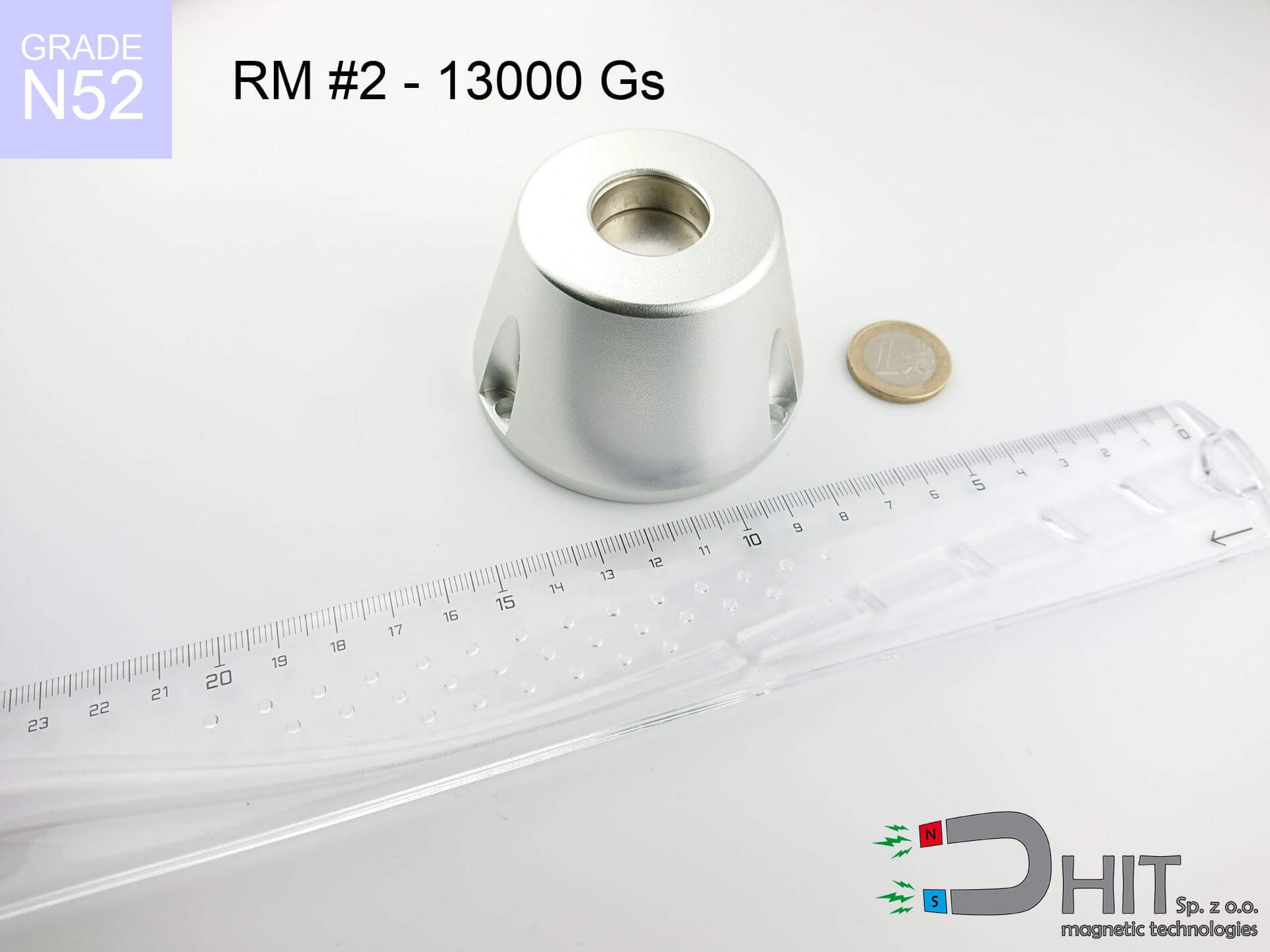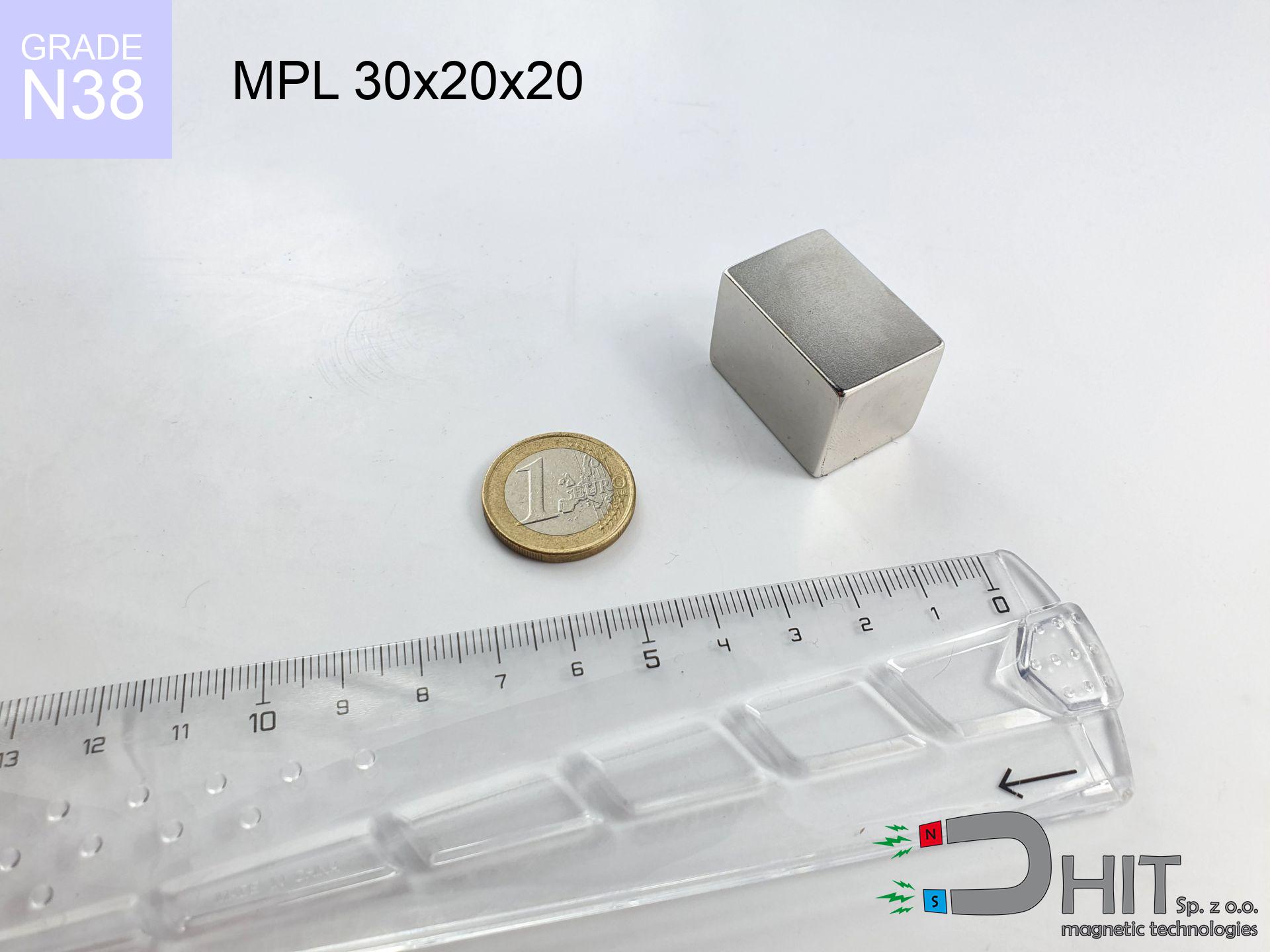RM R2 - 13000 Gs / N52 - magnetic distributor
magnetic distributor
Catalog no 280252
GTIN/EAN: 5906301814436
Weight
0.01 g
Magnetization Direction
↑ axial
Coating
[NiCuNi] Nickel
167.28 ZŁ with VAT / pcs + price for transport
136.00 ZŁ net + 23% VAT / pcs
bulk discounts:
Need more?
Call us
+48 888 99 98 98
or get in touch through
contact form
through our site.
Lifting power along with shape of neodymium magnets can be tested with our
online calculation tool.
Order by 14:00 and we’ll ship today!
Technical - RM R2 - 13000 Gs / N52 - magnetic distributor
Specification / characteristics - RM R2 - 13000 Gs / N52 - magnetic distributor
| properties | values |
|---|---|
| Cat. no. | 280252 |
| GTIN/EAN | 5906301814436 |
| Production/Distribution | Dhit sp. z o.o. |
| Country of origin | Poland / China / Germany |
| Customs code | 85059029 |
| Weight | 0.01 g |
| Magnetization Direction | ↑ axial |
| Coating | [NiCuNi] Nickel |
| Manufacturing Tolerance | ±1 mm |
Magnetic properties of material N52
| properties | values | units |
|---|---|---|
| remenance Br [min. - max.] ? | 14.2-14.7 | kGs |
| remenance Br [min. - max.] ? | 1420-1470 | mT |
| coercivity bHc ? | 10.8-12.5 | kOe |
| coercivity bHc ? | 860-995 | kA/m |
| actual internal force iHc | ≥ 12 | kOe |
| actual internal force iHc | ≥ 955 | kA/m |
| energy density [min. - max.] ? | 48-53 | BH max MGOe |
| energy density [min. - max.] ? | 380-422 | BH max KJ/m |
| max. temperature ? | ≤ 80 | °C |
Physical properties of sintered neodymium magnets Nd2Fe14B at 20°C
| properties | values | units |
|---|---|---|
| Vickers hardness | ≥550 | Hv |
| Density | ≥7.4 | g/cm3 |
| Curie Temperature TC | 312 - 380 | °C |
| Curie Temperature TF | 593 - 716 | °F |
| Specific resistance | 150 | μΩ⋅cm |
| Bending strength | 250 | MPa |
| Compressive strength | 1000~1100 | MPa |
| Thermal expansion parallel (∥) to orientation (M) | (3-4) x 10-6 | °C-1 |
| Thermal expansion perpendicular (⊥) to orientation (M) | -(1-3) x 10-6 | °C-1 |
| Young's modulus | 1.7 x 104 | kg/mm² |
Chemical composition
| iron (Fe) | 64% – 68% |
| neodymium (Nd) | 29% – 32% |
| boron (B) | 1.1% – 1.2% |
| dysprosium (Dy) | 0.5% – 2.0% |
| coating (Ni-Cu-Ni) | < 0.05% |
Ecology and recycling (GPSR)
| recyclability (EoL) | 100% |
| recycled raw materials | ~10% (pre-cons) |
| carbon footprint | low / zredukowany |
| waste code (EWC) | 16 02 16 |
Other offers
Pros and cons of neodymium magnets.
Benefits
- They virtually do not lose power, because even after 10 years the performance loss is only ~1% (according to literature),
- They feature excellent resistance to magnetism drop due to external magnetic sources,
- In other words, due to the aesthetic surface of silver, the element gains visual value,
- Magnets possess impressive magnetic induction on the outer layer,
- Made from properly selected components, these magnets show impressive resistance to high heat, enabling them to function (depending on their form) at temperatures up to 230°C and above...
- Thanks to freedom in constructing and the ability to modify to unusual requirements,
- Wide application in modern technologies – they are used in computer drives, brushless drives, medical devices, also multitasking production systems.
- Thanks to concentrated force, small magnets offer high operating force, in miniature format,
Weaknesses
- At very strong impacts they can crack, therefore we advise placing them in special holders. A metal housing provides additional protection against damage and increases the magnet's durability.
- We warn that neodymium magnets can lose their strength at high temperatures. To prevent this, we advise our specialized [AH] magnets, which work effectively even at 230°C.
- Due to the susceptibility of magnets to corrosion in a humid environment, we recommend using waterproof magnets made of rubber, plastic or other material stable to moisture, when using outdoors
- We recommend cover - magnetic mount, due to difficulties in producing threads inside the magnet and complicated forms.
- Potential hazard to health – tiny shards of magnets are risky, if swallowed, which becomes key in the aspect of protecting the youngest. Additionally, tiny parts of these products can complicate diagnosis medical in case of swallowing.
- With large orders the cost of neodymium magnets can be a barrier,
Holding force characteristics
Highest magnetic holding force – what it depends on?
- using a plate made of low-carbon steel, acting as a magnetic yoke
- whose transverse dimension is min. 10 mm
- with a plane perfectly flat
- without the slightest air gap between the magnet and steel
- under perpendicular application of breakaway force (90-degree angle)
- in temp. approx. 20°C
What influences lifting capacity in practice
- Gap (betwixt the magnet and the metal), as even a tiny clearance (e.g. 0.5 mm) leads to a reduction in lifting capacity by up to 50% (this also applies to paint, rust or dirt).
- Load vector – maximum parameter is obtained only during pulling at a 90° angle. The resistance to sliding of the magnet along the plate is usually many times smaller (approx. 1/5 of the lifting capacity).
- Steel thickness – insufficiently thick sheet does not accept the full field, causing part of the flux to be lost to the other side.
- Steel grade – the best choice is high-permeability steel. Stainless steels may generate lower lifting capacity.
- Surface quality – the smoother and more polished the plate, the larger the contact zone and stronger the hold. Roughness acts like micro-gaps.
- Temperature – temperature increase results in weakening of force. It is worth remembering the thermal limit for a given model.
Lifting capacity was determined with the use of a smooth steel plate of optimal thickness (min. 20 mm), under vertically applied force, however under attempts to slide the magnet the lifting capacity is smaller. Additionally, even a small distance between the magnet and the plate reduces the load capacity.
Warnings
Sensitization to coating
It is widely known that the nickel plating (the usual finish) is a potent allergen. If your skin reacts to metals, refrain from direct skin contact or select versions in plastic housing.
Bone fractures
Risk of injury: The pulling power is so immense that it can cause hematomas, pinching, and even bone fractures. Protective gloves are recommended.
Dust is flammable
Dust produced during machining of magnets is self-igniting. Avoid drilling into magnets without proper cooling and knowledge.
Powerful field
Use magnets with awareness. Their immense force can surprise even experienced users. Plan your moves and respect their power.
Pacemakers
Individuals with a heart stimulator must keep an safe separation from magnets. The magnetic field can interfere with the operation of the implant.
Magnet fragility
Despite metallic appearance, neodymium is delicate and not impact-resistant. Avoid impacts, as the magnet may shatter into sharp, dangerous pieces.
Danger to the youngest
NdFeB magnets are not toys. Accidental ingestion of multiple magnets can lead to them pinching intestinal walls, which poses a critical condition and requires immediate surgery.
Magnetic interference
GPS units and smartphones are highly sensitive to magnetic fields. Close proximity with a powerful NdFeB magnet can decalibrate the internal compass in your phone.
Operating temperature
Regular neodymium magnets (N-type) lose power when the temperature surpasses 80°C. The loss of strength is permanent.
Keep away from computers
Do not bring magnets close to a wallet, computer, or TV. The magnetism can permanently damage these devices and wipe information from cards.



![BM 450x180x70 [4x M8] - magnetic beam BM 450x180x70 [4x M8] - magnetic beam](https://cdn3.dhit.pl/graphics/products/bm-450x180x70-4x-m8-duh.jpg)
![SM 32x225 [2xM8] / N42 - magnetic separator SM 32x225 [2xM8] / N42 - magnetic separator](https://cdn3.dhit.pl/graphics/products/sm-32x225-2xm8-dob.jpg)

![UMGW 32x18x8 [M6] GW / N38 - magnetic holder internal thread UMGW 32x18x8 [M6] GW / N38 - magnetic holder internal thread](https://cdn3.dhit.pl/graphics/products/um32x18x8-m6-gw--hec.jpg)

